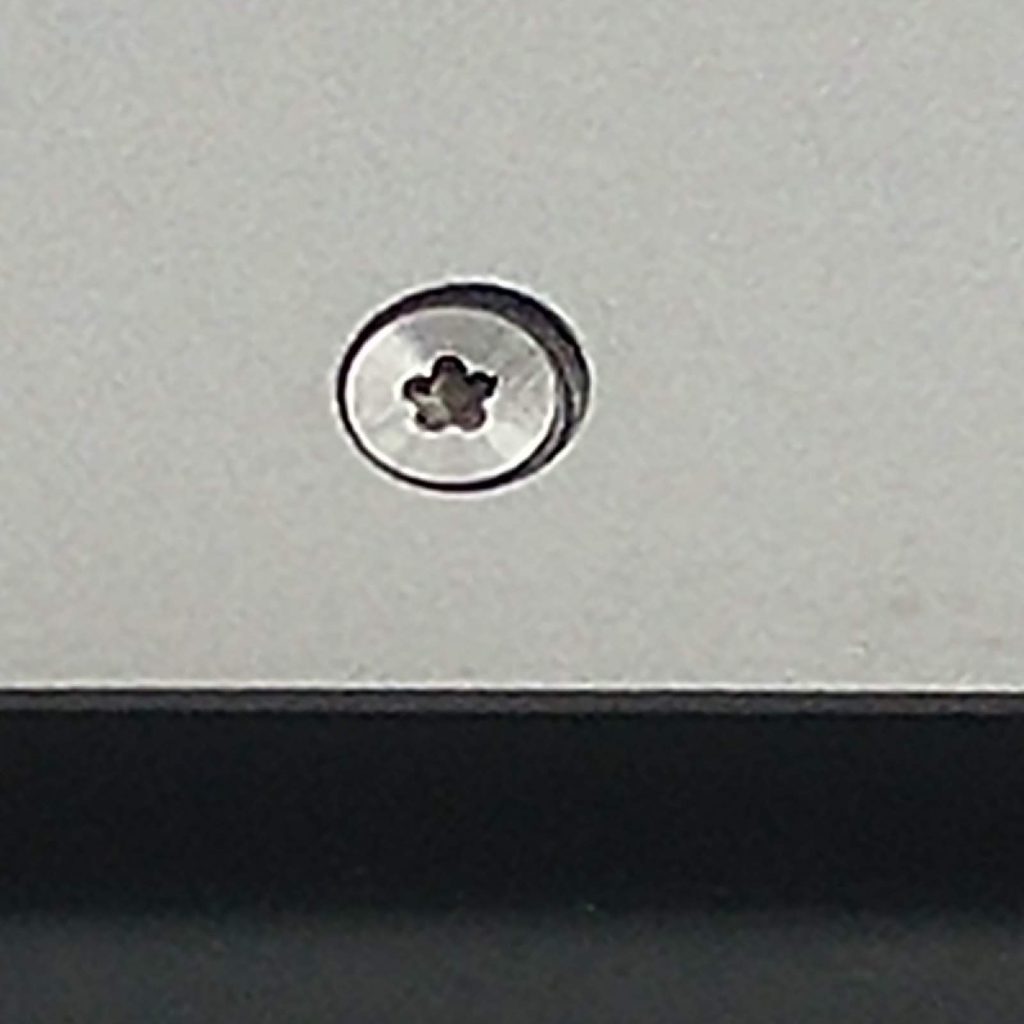This is a picture of the underside of my Apple 2015 MacBook Pro.

You can see that the head of the screw has a strange 5-pointed star shape. It’s also tiny, but more importantly non-standard. Good luck using your favourite screwdriver from the home toolkit. You’ll need a non-standard screwdriver, perhaps like this one.
That’s because Apple doesn’t want me to unscrew the screw, because they don’t want me to open the case and do my own repair, because they want me to buy another computer, because profit.
VIN-Locking
Not that I would know what to do next once the case is open, far from it, but my local computer repair shop might, and sometimes they can. This is just one of the many tactics that Apple uses to force you to buy their latest baby. Another one is called VIN-Locking.
The name comes from the automakers industry and the acronym stands for vehicle identification number. The VIN was designed to identify a unique motor vehicle — much like a MAC address uniquely identifies your physical communicating device on a network — but it has also been used by manufacturers to prevent independent repairers from doing their job, which is to fix your car. The automaker embeds smart chips in its various mechanical parts, and when they are assembled, the chips enter into a handshake protocol, involving the exchange of serial numbers, VINs, cryptographic codes and stuff, to ensure that the repair is legit and authorised. If not, the parts will refuse to operate. So clever. There may be a silver lining to this questionable practice though: apparently, when Ukrainian tractors were stolen by the Russian army, the manufacturer, John Deere, could disable them remotely. Something, by the way, that the company can also do to your own tractor, even though you paid a lot of money for it.
Microscopic Apple logos

But back to Apple1. As if its obsession to prevent us from repairing the hardware that we buy wasn’t enough, the sociopathic giant also doesn’t want us to reuse the parts at the end of the device’s useful life. Apple prints its logo everywhere on reusable parts, like a puppy dog marking its territory, in tiny dimensions and thus difficult to see with the naked eye. A small repair shop owner in Norway, who wanted to use imported iPhone-compatible screens with tiny counterfeit Apple logos (but masked by the owner with black ink) was taken to court by Apple. The owner eventually lost his case in the Supreme Court. Apple’s argument was that the ink could be removed and the part be used to misrepresent the company. If you’re into that sort of thing, you can read all the funny details by following this link.2
And there goes the environment
Attacks on the right to repair and on the right to reuse are close relatives of planned obsolescence. The scope of this modest blog post doesn’t allow me to go into detail, but as you can imagine, the environmental consequences of all those tactics, on a global scale, are catastrophic. Because profit.
- Anti-right-to-repair tactics are probably ubiquitous in the world of computer hardware. The reason I’m focusing on Apple is that it’s low hanging fruit. They do it in such a blatant way. ↩︎
- Many of the hyperlinks in this blog post have been harvested from this article as a starting point. ↩︎


Very interesting topic! With all these obstacles and hoops customers have to jump through to have a simple piece of equipment, it almost seems as if the companies do not want to sell fully functioning products, which definitely feels counter-intuitive, but is sadly the reality we have to deal with. I find it a bit similar to fast-fashion brands in a way, since the items they sell are such bad quality we are almost forced to throw them away and replace them. Although stuff like laptops or phones are technically supposed to be more long-lasting, I think the unifying factor between the two industries is this commitment to making the consumer miserable.
The more I read about Apple, the less I like the company’s way of behaving. Hopefully, the fact that every smartphone needs to have a USB-C port is some sort of starting point for having more technical components be the same across brands and thus making the technical world less ‘detailed in an unhandy way’.